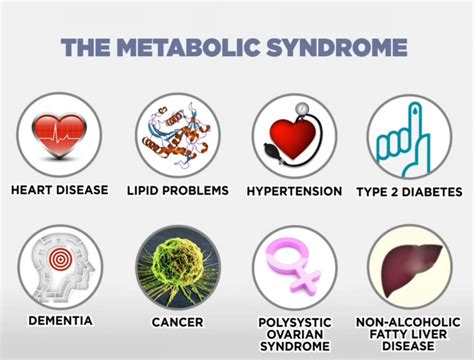SUMMARY: Metabolic syndrome, the product of hyper-sedentary living and over-consumption of calories, has become the hallmark of our times the world over. It is a constellation of consequences, none of which do you want occurring in your body! Things like depression, obesity, lack of sexual performance, chronic pain, insomnia, accelerated aging, poor memory, and increased susceptibility to cancer. Do I have your attention?
.
Sampling of Prevalence Studies for Metabolic Syndrome
- Children 3% (1 in 33) 1
- Adolescents 5% (1 in 20) 1
- Adult Malaysian males 25% (1 in 4) 2
- Adult Malaysian females 18% (1 in 6) 2
- Adult US male/female combined 38% (2 in 5)3
Quick Test:
Do you have trouble losing excess weight?
Are you tired all the time?
Do you lack motivation?
Are you unable to sleep, even when you’re beyond exhausted?
Do you experience unquenchable thirst?
Do you feel dizzy when standing up too fast?
Do you have a hard time remembering and concentrating?
Are there multiple symptoms that seem annoying but you’ve decided to deal with because they have been a part of your life for a long time?
You may be experiencing metabolic syndrome. I answered yes to all of the above by the age of 12. Thankfully a book in my junior high school library set me on a path of recovery.
Metabolic Syndrome, Historically
Historically, the picture above sums up how metabolic syndrome was measured. Metabolic syndrome was believed to only affect people that were overweight, at risk for strokes, heart issues, high cholesterol, diabetes 2. It has been recognized in the obese sectors of the population, however, in our super-sedentary world, obesity is not the main factor anymore.
We are Super-Sedentary
Most people believe the popular narrative that modern living is sedentary and unnatural. This, however, overlooks how sedentary we actually are. Human beings until 12000 or so years ago we exclusively hunter-gatherers. This means that our ancestors were constantly in motion from sunrise to sundown. Near non-stop motion during our waking hours is the human baseline. Any less than that is sedentary. Therefore, we became sedentary when we began to farm and raise livestock and function in stationary villages and towns. Fast forward to the 20th century and you’ll realize that we achieved a whole new level of sedentary, what I call super-sedentary. Work eventually consisted of sitting at a desk and using cars to get around.
Commercial Oils – High in calories but leave you hungrier
Not only are we super-sedentary but not getting enough calories is virtually unheard of. Even in the remotest regions of third-world country refined carbohydrates and cheap fats insure more than enough calories to survive. In too many case well in excess of what is needed to survive! To make matters worse these cheap oils are known to be orectic. In other words, they stimulate appetite when consumed.
What?! Doesn’t consuming fat cause you to feel full and satisfied after a meal? Historically yes, however with the advent of industrial oil extraction from previously unattainable oil sources a whole new crop of oils is being consumed. Many of these oils are high in lineoleic acid and increase the “hunger hormone” ghrelin AND decrease sensitivity to insulin. Decreased insulin sensitivity is a hallmark of type-2 diabetes. Yikes! Now we know why we “can’t eat just one!”
Why Metabolic Syndrome gets ignored
Metabolic syndrome gets overlooked because the “cure” is lifestyle and too many practitioners think that no one will change their lifestyle so why bother. Who wants to eat less? Who wants to run, hike, cycle, and swim? Who wants to take less, ideally none, drugs? In my experience EVERYONE.
A separate question is who is actually doing it? Everyone who has chosen to be well and has adequate support. That is where TBM comes in. Developed in the 1950s, 60s, and 70s when metabolic syndrome was just appearing a solution for it was baked in. We begin with doable and sensible lifestyle changes and provide interventions that entice the body to eat less and be more active–without any drugs!
We call it the Autonomic Recovery Program. Watch for more blogs on both metabolic syndrome and our Autonomic Recovery Program in the comes weeks and months. In the meantime become more familiar with the topics I’ve discussed above.
- Noubiap, JJ, et al. Global, regional, and country estimates of metabolic syndrome burden in children and adolescents in 2020: a systematic review and modelling analysis. Lancet. Volume 6, ISSUE 3, P158-170, March 2022. DOI:https://doi.org/10.1016/S2352-4642(21)00374-6
- Manaf, MRA, Nawi, AM, Tauhid, NM, et al. Prevalence of metabolic syndrome and its associated risk factors among staffs in a Malaysian public university. Sci Rep 11, 8132 (2021). https://doi.org/10.1038/s41598-021-87248-1
- Hirode, G, Wong, RJ. Trends in the Prevalence of Metabolic Syndrome in the United States, 2011-2016 JAMA . 2020 Jun 23;323(24):2526-2528. doi: 10.1001/jama.2020.4501.

